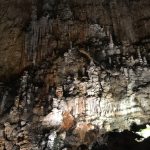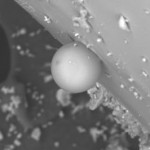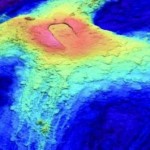Three times before the Cambrian period (545 mya), the entire earth has been buried in several kilometers of snow -- based on evidence including tropical glacial deposits and the cessation of carbonate production (which prefers to form in warmer waters) -- in a phenomenon known as Snowball Earth. But what causes these drastic glaciations to occur?Most theories have focused on internal forcing, but one new theory posits that external forcing -- supernovae and starbursts -- could be the culprit. These nebulae send large amounts of cosmic dusts particles (which reflect sunlight) and cosmic rays (which, depending on type, destroy the ozone or form reflective clouds) into our atmosphere, decreasing solar radiation hitting the ground and resulting in global cooling. Snow has a high albedo, which means it reflects sunlight away very well, so as snow begins to accumulate, a positive feedback cycle begins.
- Supernova
Encounters last 1–10 kyrs
Occur within 10 pc of the solar system approximately once per several hundred myrs
Catastrophic explosion of a heavy star (> 8 solar masses) - Dark cloud
Encounters last 0.1–10 Myrs
Dense dark cloud of 2000/cc occurs once every billion years
High-density and low-temperature neutral gas; 1% cosmic dust by mass - Starbursts
Last ~100 Myrs
Occur every several ten myrs
Star-formation rate in a galaxy enhanced by interactions with nearby galaxies
At 4.6 billion years old, the earth has survived a few encounters with nebulae, and some of these encounters overlap with Snowball Earth events. Starburst events occurred 2.0-2.4 and 0.6-0.8 bya, which corresponds to Snowball Earths in the early Paleoproterozoic and the late Neoproterozoic. The authors also noticed that several large extinction events also correlated with supernovae and dark clouds; they believe that on top of wiping out tons of species, the nebulae could have sped up evolution by increasing rates of mutation.

Notice the correlation between Snowball Earths (top, blue bars) and extinctions (top, purple arrows) and nebula events (red and black bars, bottom).
Right now, this intriguing "Nebula Winter" theory has temporal correlation and an explanatory mechanism on its side, but more research is needed to confirm its validity. According to the authors, the next step is to look for geochemical evidence of supernovae, such as iridium, in sediments and rocks formed during the Snowball Earths.
Kataoka, R., Ebisuzaki, T., Miyahara, H., Nimura, T., Tomida, T., Sato, T., & Maruyama, S. (2013). The Nebula Winter: The united view of the snowball Earth, mass extinctions, and explosive evolution in the late Neoproterozoic and Cambrian periods. Gondwana Research. Available from: http://www.sciencedirect.com/science/article/pii/S1342937X13001597
Bonus information on Snowball Earths:
- When did they occur? A few times.
- Could a Snowball Earth have fueled photosynthesis by releasing peroxide? Read more here or here.






